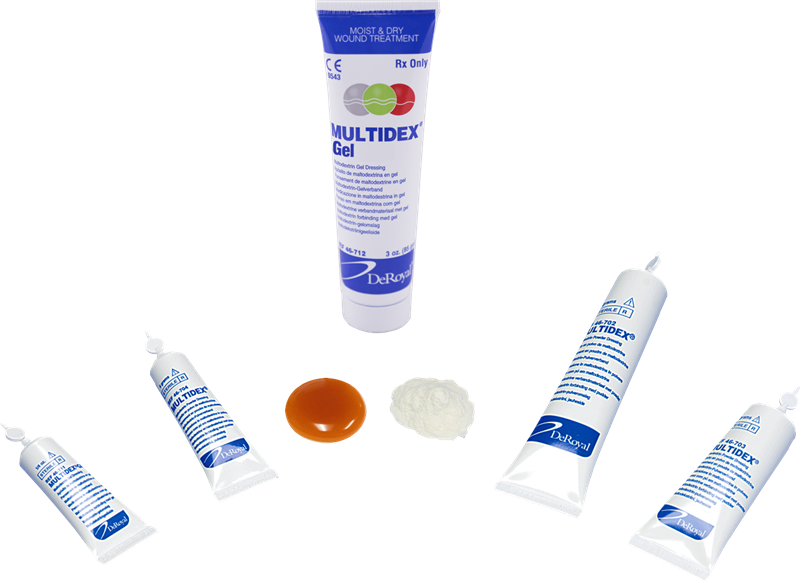Instructions for proper ulcer care in the elderly
A pressure ulcer is a localized injury that results from unrelieved pressure to the skin and underlying tissue. These ulcers usually occur over bony prominences such as the sacrum, ischial tuberosities, greater trochanters, heels and lateral malleoli. About 70% of pressure ulcers occur in people over age 65.

It is necessary to take proper care of ulcers in the elderly.
1. Causes of pressure ulcers in older adults
There are 3 main groups of causes of ulcers in the elderly:
2. Characteristics of Pressure Ulcers, by Stage
-
Stage I: Intact skin with non-blanchable redness
-
Stage II: Partial-thickness loss of dermis; no fat visible
-
Stage III: Full thickness loss, fat may be visible
-
Stage IV: Full thickness loss with exposed bone, tendon, or muscle

Multidex is suitable for the treatment of ulcers in the elderly at all stages
3. Treatment of skin ulcers in the elderly
Treatment of pressure ulcers is interdisciplinary and includes reducing or relieving pressure, wound cleansing, debriding necrotic tissue, using appropriate dressings and antibiotics, and ensuring good nutrition.
Steps to treat skin ulcers in the elderly with Multidex:
Step 1: preparation of site
-
Necrotic tissue should be debrided according to acceptable practice or as directed by an attending physician.
-
The site should be irrigated liberally with a sterile physiological 0.9% normal saline or a balanced salts solution.
Step 2: After irrigation, apply Multidex®.
Step 3:Cover with a non-adherent, non-occlusive dressing such as Covaderm Plus®, MultiPad™, Sofsorb®, or Polyderm™ Plus. If necessary, tape in place or use roll gauze or Stretch Net™ to secure dressing.
Step 4: Dressing change should be once a day on minimally to moderately draining wounds and twice a day on heavily exudating wounds.
-
Remove non-adherent dressing with care. If dressing adheres to wound, soak with saline for several minutes before removing so the fragile granulation tissue is not disturbed.
-
Flush site liberally but gently with a sterile, physiological irrigating solution to remove debris. This will leave newly formed granulation tissue undisturbed.
-
Usual frequency of dressing change is once a day, depending upon drainage and the type of secondary dressing.